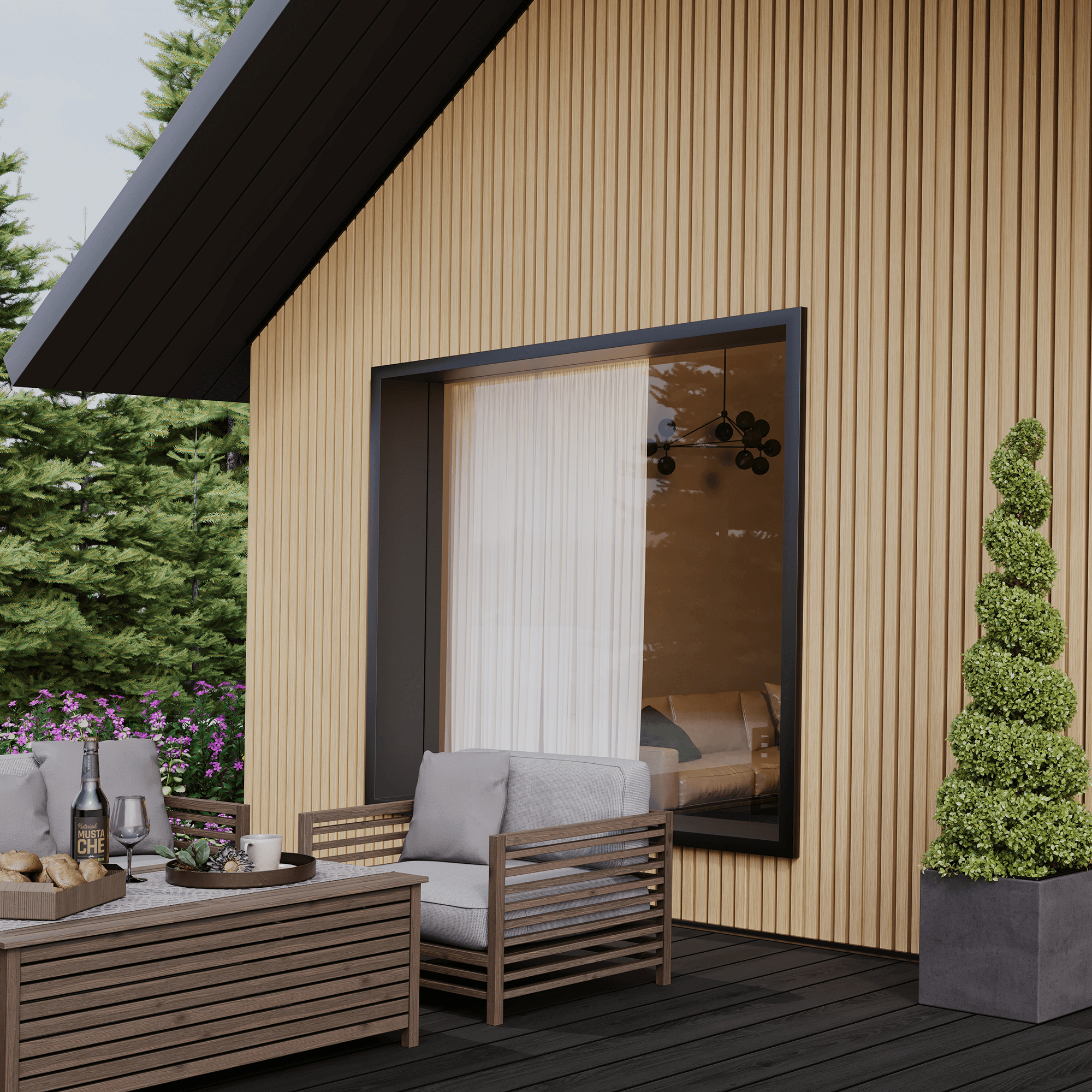
Do You Need Planning Permission for Cladding?
If you’re considering installing cladding on your home or in the garden, you’ve probably asked the question, ‘Do you need
Products in Stock
Lowest Prices
Express Delivery
10-Year Warranty
December Sale. Up To 15% Off.

Building and maintaining decking can be costly, so you want to make sure that it lasts as long as possible. This is why many people opt for composite decking, an alternative to conventional wood or PVC decking, favoured by homeowners for its long lifespan and durability. In this article, we’ll explore how long composite decking lasts so you can make the right decision for your garden.
Composite decking can last between 20-40 years, and with proper maintenance it can be enjoyed for even longer. Unlike traditional wood decking, composite decking is resistant to rot, mould, and insect damage, making it a much more durable and longer-lasting option. Additionally, composite decking has several advantages, such as minimal fading in the sun and scratch resistance, allowing it to maintain its sleek appearance over time.
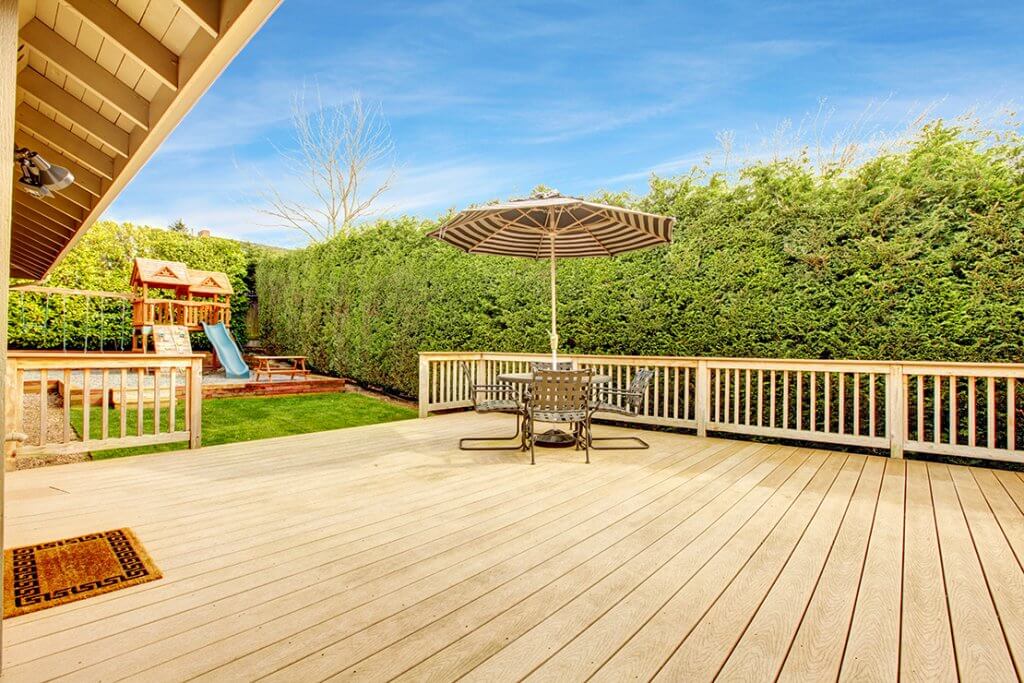
Composite decking’s long lifespan is mainly due to its materials. Composite decking is a synthetic material made from a blend of recycled wood and plastic. The plastic element prevents many of the issues that are associated with wood fencing products such as mould and rot. The result is a durable and low-maintenance product that has a longer lifespan than wood, which is the most common alternative material. Read our blog on what composite decking is made of.
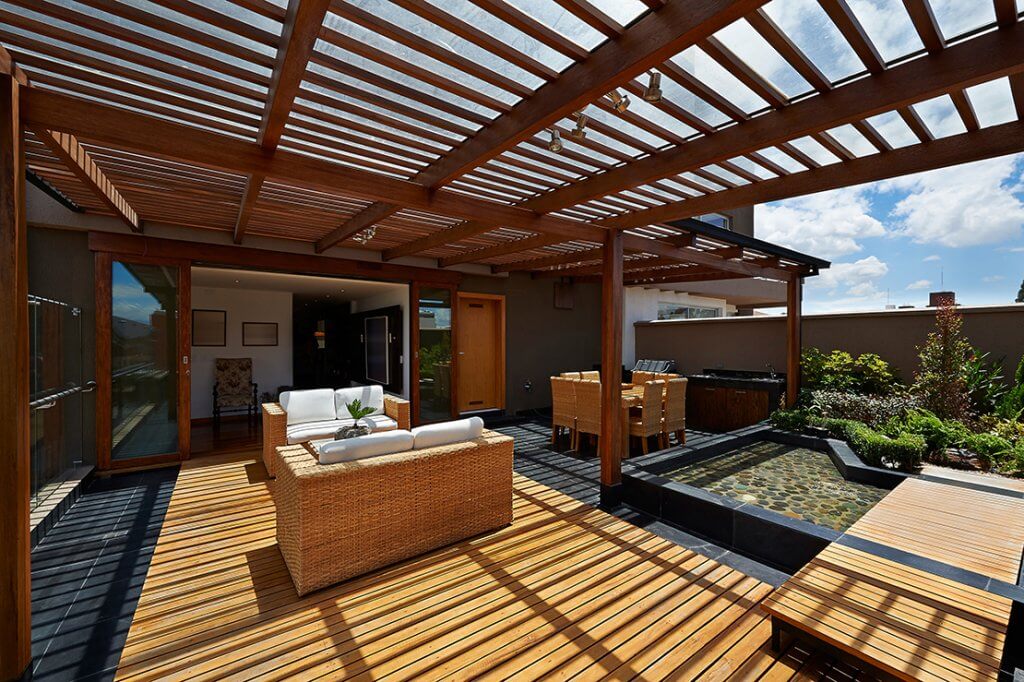
Unlike traditional wood decking, which may only last around 10 to 15 years, composite decking’s lifespan is much longer. This longevity is primarily due to the materials used in composite decking such as plastic. The plastic in composite decking boards protects them from many of the major issues that affect wood, such as rot, warping, splinters, and splitting.
The wood fibres found in composite decking are coated in plastic, which help to protect them from these issues. Wood-boring insects also won’t attack composite decking boards, eliminating the need for the treatments required for wood decks.
When comparing wood vs composite decking, other reasons homeowners may opt for composite decking rather than wood include:
Signs of wear and tear in composite decking can include cracking, fading or splintering, things you do not want. Overtime, prolonged exposure to the elements, especially the sun, can cause your decking to fade. It can also cause your decking to start cracking at the edges, something which needs immediate attention.
Splintering can also happen. Composite decking is designed to resist splintering, but heavy use and general wear and tear can still make it appear. Ensure you properly maintain your decking by cleaning it regularly and remaining aware during periods of harsh weather.
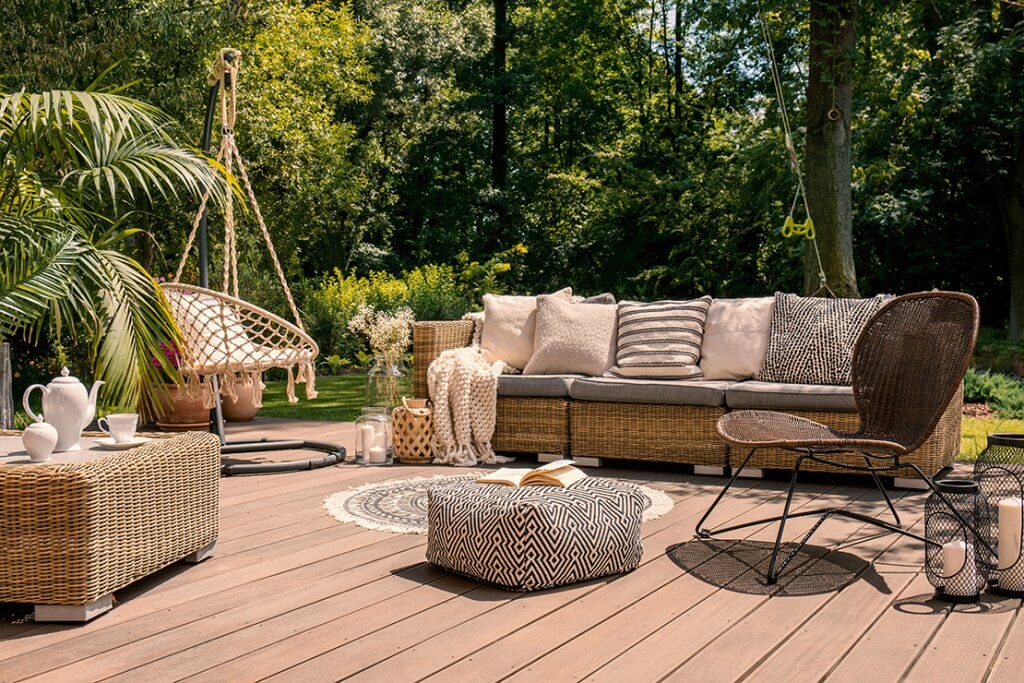
Since composite decking’s lifespan is longer than wood decking, it requires less frequent replacement. This reduces the energy and material inputs needed to produce new decking and results in less waste being sent to landfills.
As the wood that’s used to make the decking is recycled, it also means no trees have to be felled in order to make it, contributing to forest preservation. It also uses recycled plastic. Additionally, composite decking doesn’t need to be stained or sealed like traditional wood decking, which reduces the number of harmful chemicals that enter the soil. Read more about composite decking and sustainability.

Certain factors can affect the lifespan of composite decking, including maintenance and the quality of materials used. Other factors to be aware of include:
The main factor that can affect the lifespan of composite decking is incorrect installation. Ensuring your decking is installed with adequate airflow underneath is crucial to prevent moisture trapping, which can lead to mould growth and structural issues. Additionally, proper ground preparation and the use of correct tools are essential. If you plan to install composite decking yourself, read our guide on how to install composite decking to ensure it’s done correctly.
When installing your decking, it’s vital to ensure proper spacing between the boards, maintaining a gap so they aren’t touching. For composite decking, the spacing should be 300mm; otherwise, the boards may begin to curve, leading to bending.
Another crucial aspect of installation is using the correct fasteners. Only Dino’s decking fixing clips are compatible with Dino Decking composite decking products. Using our fasteners also ensures that your warranty remains valid.
Expansion and contraction can occur in all decking materials, due to temperature fluctuations between seasons. It’s therefore important to factor expansion gaps into the installation process, as failing to include these gaps can hinder your decking’s longevity.
Prolonged sun exposure can cause composite boards to contract and expand, potentially leading to cracking, warping, and splitting over time. Therefore, proper installation of your composite decking is crucial. Additionally, darker colours tend to heat up more quickly, so it’s advisable to avoid walking on them barefoot during hot weather.
Natural debris such as leaves and branches can cause issues for your composite decking, as they can lead to mould and mildew when combined with wet conditions. Therefore, it’s important to remove the build up as soon as possible.
Using incorrect methods of cleaning can also negatively impact your composite decking over time. For example, using harsh and abrasive chemicals such as chlorine bleach, which can damage the surface and cause the colour to fade, so a dedicated composite decking cleaner is best.
To prevent puddles from forming on the decking surface, ensure it has a sloped gradient that directs water away from the property, allowing for proper drainage and surface run-off.
Composite decking is designed to be strong and durable. Whether your area is facing thunderstorms or snow storms, composite decking is built to withstand these sorts of conditions. You can be sure that your decking won’t rot as a result of heavy rain.
To keep your composite decking looking fresh, we recommend cleaning it at least twice a year using soap and water or a gentle pressure washer. Avoid using products that contain harsh chemicals as this can do more harm than good.
Composite decking is completely resistant to fading due to its durable properties. Over time, it is expected that your composite decking will experience minimal fading but its makeup ensures the original colour remains full and vibrant.
At Dino Decking, we take pride in offering low-priced, high quality composite decking that you can enjoy for years to come. Our durable decking boards are available in a range of popular colours such as grey composite decking and white composite decking.
You can also find a variety of composite decking accessories including corner trims, bullnose edges, fascia, skirting and end caps. Order composite decking today from the UK’s top supplier, and receive an exclusive 10-year warranty.
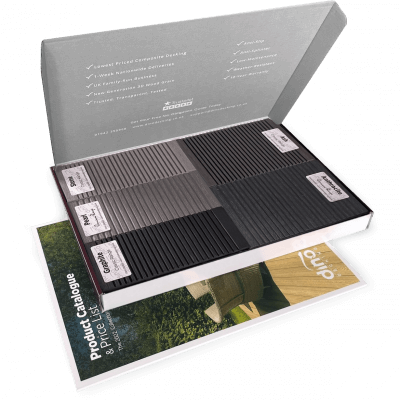
Our sample pack contains a sample piece of each colour currently available. Order your free sample pack today to compare the colours and get a true feeling of the Dino Decking range!

If you’re considering installing cladding on your home or in the garden, you’ve probably asked the question, ‘Do you need
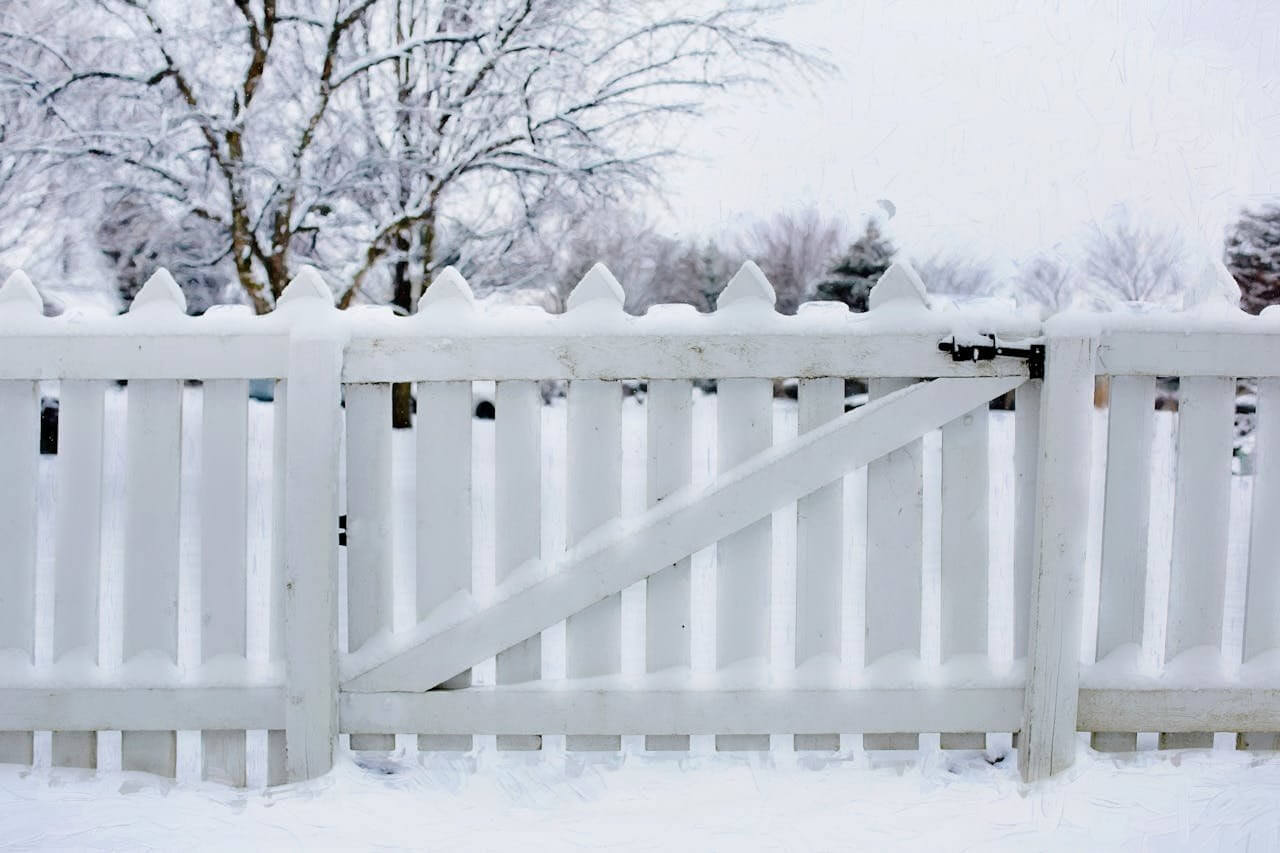
If you’re looking to go all out this festive season, you might be looking for some fantastic Christmas garden ideas